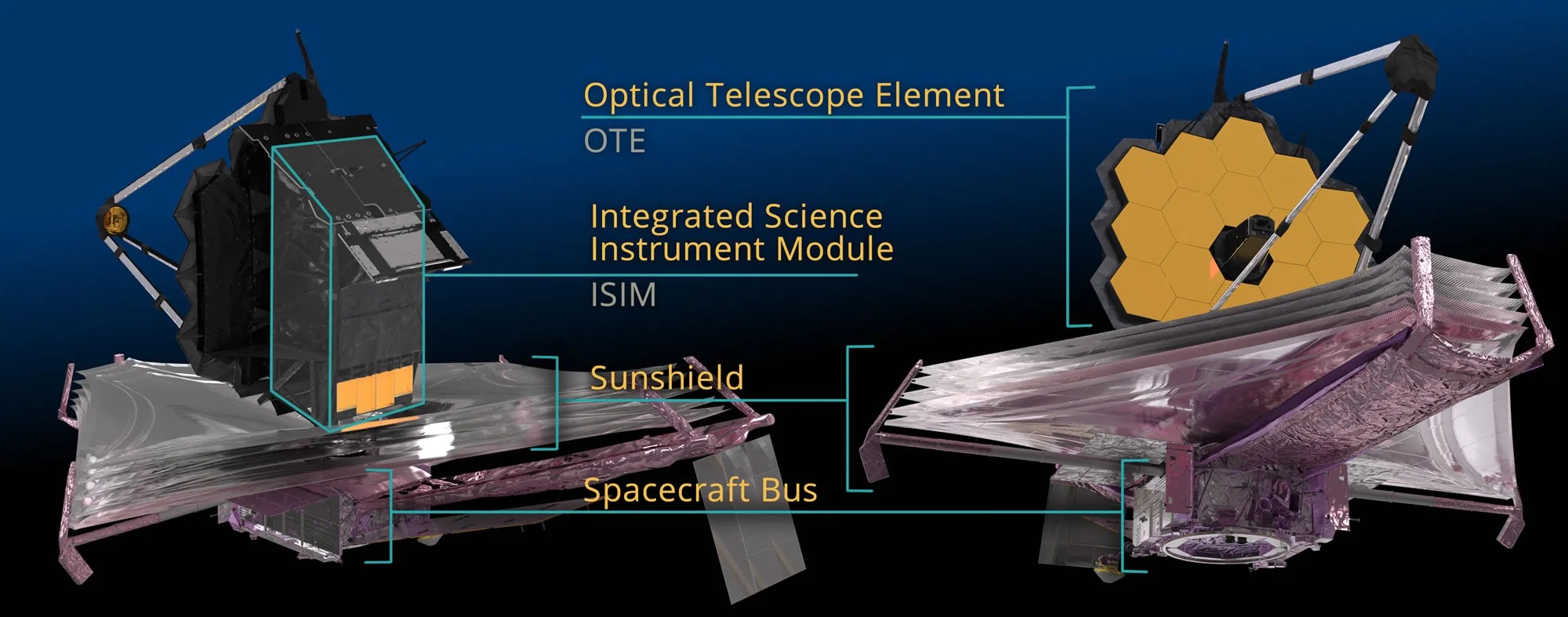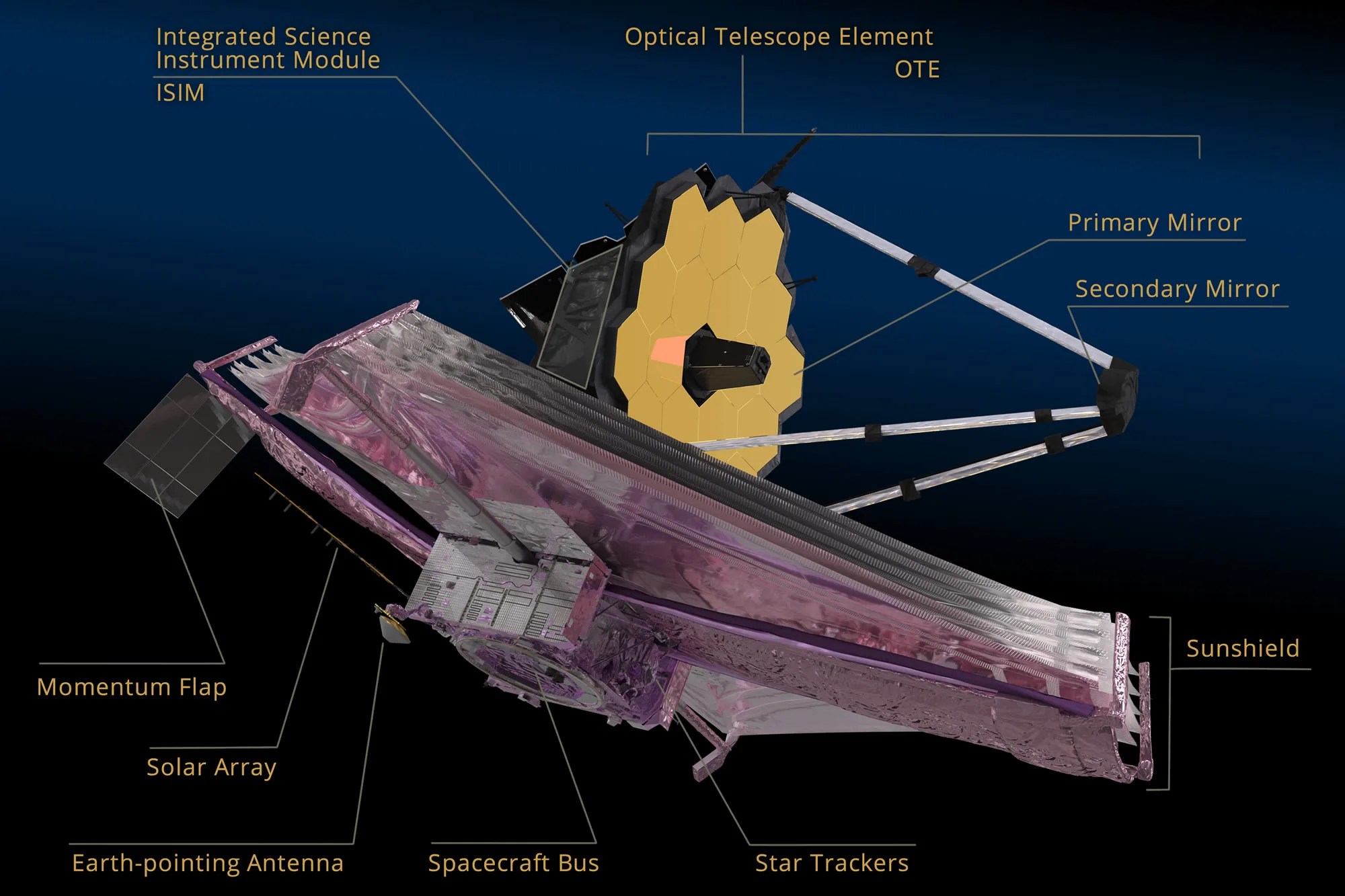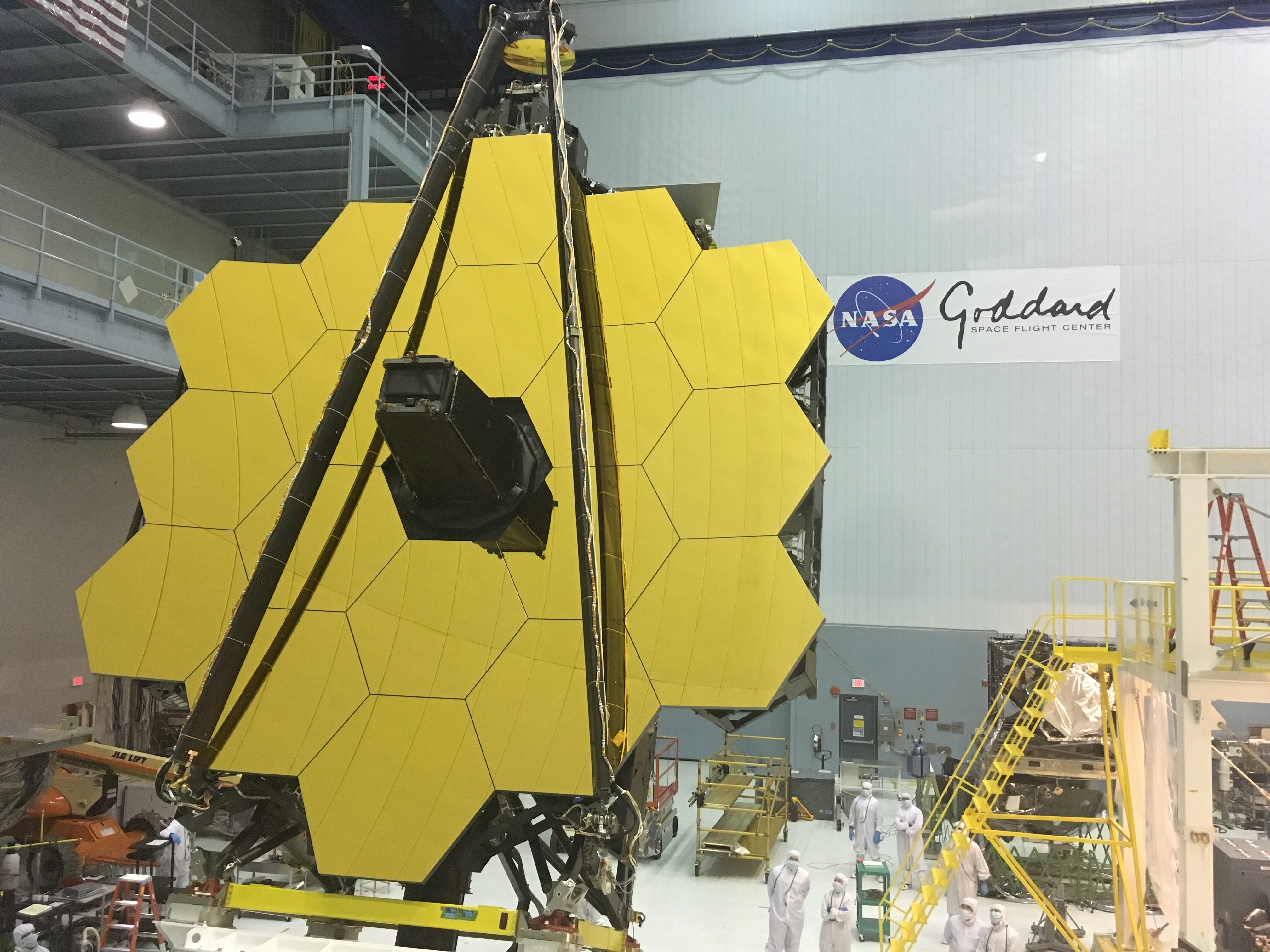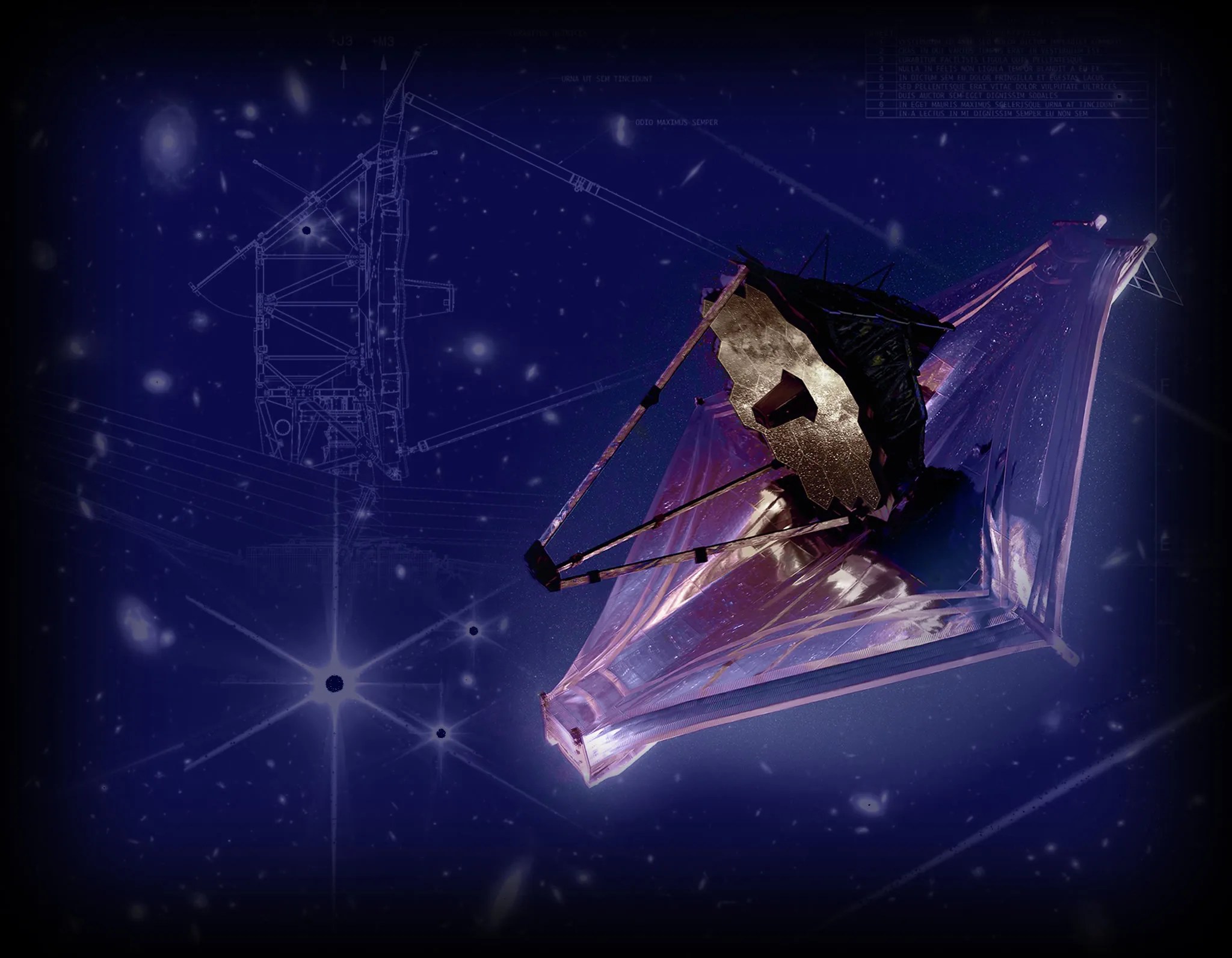Explore the Observatory
The observatory is the space-based portion of the James Webb Space Telescope system.
Designing Webb Video
The Webb Space Telescope is the most powerful space telescope ever made – and the most complex one yet designed. Did you know that the telescope’s history stretches back before the Hubble Space Telescope was launched? This video explores the various early concept designs for Webb, including the criteria and the players. Learn more about Webb’s final design, how it evolved, and how the completed telescope was tested and prepared for its historic launch.
Major Components
The Observatory is the space-based portion of the James Webb Space Telescope system. It is comprised of the Optical Telescope Element (OTE), the Integrated Science Instrument Module (ISIM), the sunshield and the spacecraft bus.

Optical Telescope Element OTE
ISIM and Instruments
The Integrated Science Instrument Module ISIM contains Webb’s cameras and instruments. It integrates four major instruments and numerous subsystems into one payload.
Sunshield
The sunshield separates the observatory into a warm sun-facing side (spacecraft bus) and a cold anti-sun side (OTE and ISIM). The sunshield keeps the heat of the Sun, Earth, and spacecraft bus electronics away from the OTE and ISIM so that these pieces of the Observatory can be kept very cold (The operating temperature has to be kept under 50 K or -370 deg F).
Spacecraft Bus
The spacecraft bus provides the support functions for the operation of the Observatory. The bus houses the six major subsystems needed to operate the spacecraft: the Electrical Power Subsystem, the Attitude Control Subsystem, the Communication Subsystem, the Command and Data Handling Subsystem, the Propulsion Subsystem, and the Thermal Control Subsystem.
Key Elements

Webb’s major subsystems and components.
The Observatory consists of:
- The Optical Telescope Element (OTE) includes:
- The Integrated Science Instrument Module (ISIM) contains these instruments:
- Sunshield
- Spacecraft Bus
- Other elements include:
- The momentum flap balances the solar pressure on the sunshield, like a trim flap in sailing. It’s not adjustable on orbit, but it is while it’s on the ground.
- The Earth-pointing antenna sends science data back to earth and receives commands from NASA’s Deep Space Network.
- The solar array is always facing the sun to convert sunlight to electricity to power the Observatory.
- The star trackers are small telescopes that use star patterns to target the observatory.
Stress Tests: Making a Hardy Webb
As the world marvels over the first public images from the James Webb Space Telescope, Webb Deputy Project Manager for…
Read the Story
Gallery: The Story of Webb's Build
A curated gallery of over a decade of images of Webb's design, build, test and integration leading to it's launch on December 25, 2021.
Click any image to go to an image detail page with description, additional information and the ability to download the image in various resolutions (use the download arrow icon in lower right corner on Flickr click through image).


